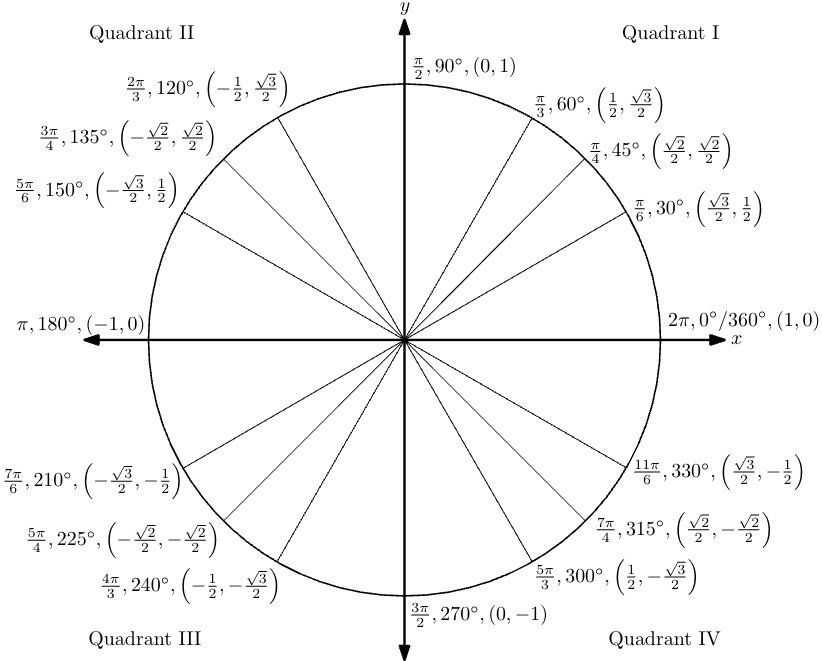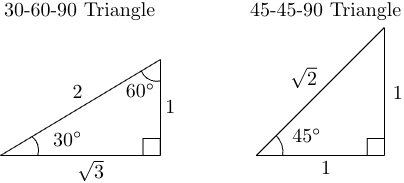Master Calculus! Get instant help on “I Aced Calculus AP” App. Hundreds of flashcards and practice questions at your fingertips. Download now on the App Store and Google Play.

15 Nov 2024
The unit circle is defined by $x^2 + y^2 = 1$, which is a circle with radius $1$, centered at the origin $(0, 0)$. An example of the unit circle is below:

An angle is in standard position if its initial side is on the positive $x$-axis, its vertex is at the origin and it is measured counterclockwise from the initial side to the terminal side. The unit circle above gives the radian measure, the degree measure, and the point where its terminal side intersects the unit circle for some common angles. The point where the terminal side of angle $\theta$ intersects the unit circle is defined by $(\cos\theta, \sin\theta)$. In other words, $\cos \theta$ is the $x$-coordinate of the intersection point and and $\sin \theta$ is the $y$-coordinate.
For example, looking at the $120^\circ$ angle, we see that the radian measure is $\dfrac{2\pi}{3}$. In addition, the $x$- and $y$-coordinates of the intersection, and we know that $\cos 120^\circ = -\dfrac12, \sin 120^\circ = \dfrac{\sqrt3}2$. This gives the point $\bigg(\!\!-\dfrac12, \dfrac{\sqrt3}2\bigg)$.
While the values and angles in the unit circle look complicated, there are a lot of patterns and symmetry that can help you memorize the whole thing. If you look carefully, the first quadrant is duplicated in quadrants II, III and IV. You might also notice that the $x$- and $y$-coordinates for the corresponding points on the unit circle have the same values but different signs. In fact, it is sufficient to memorize the ratios in the 30-60-90 right triangle and the 45-45-90 right triangle to be able to figure out all values of special angles on the unit circle:

To leverage the symmetry in the unit circle, we define the reference angle as the angle between the terminal side and the $x$-axis. The measure of the reference angle is always between $0^\circ$ and $90^\circ$. For example, $180^\circ$ has a reference angle measuring $0^\circ$, $270^\circ$ has a reference angle of $90^\circ$ and $240^\circ$ angle has the reference angle measuring
$$240^\circ – 180^\circ = 60^\circ$$